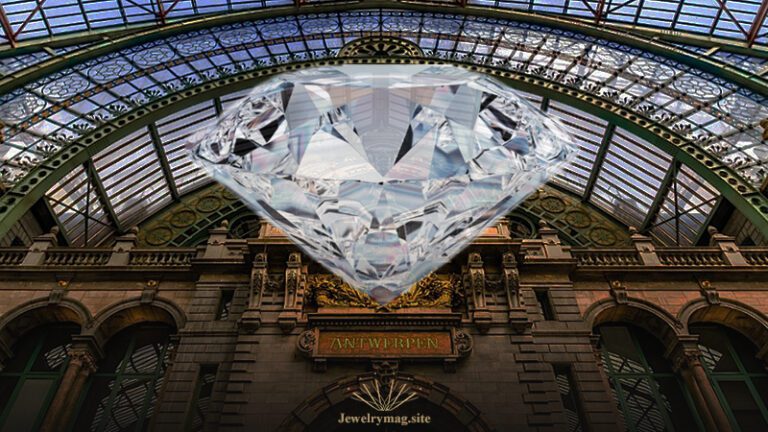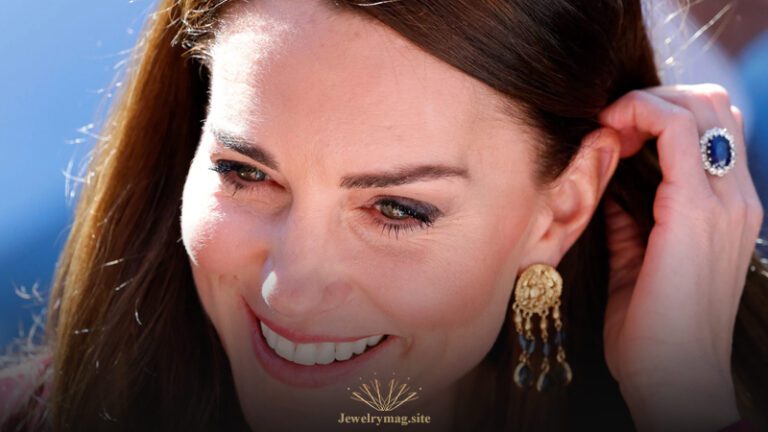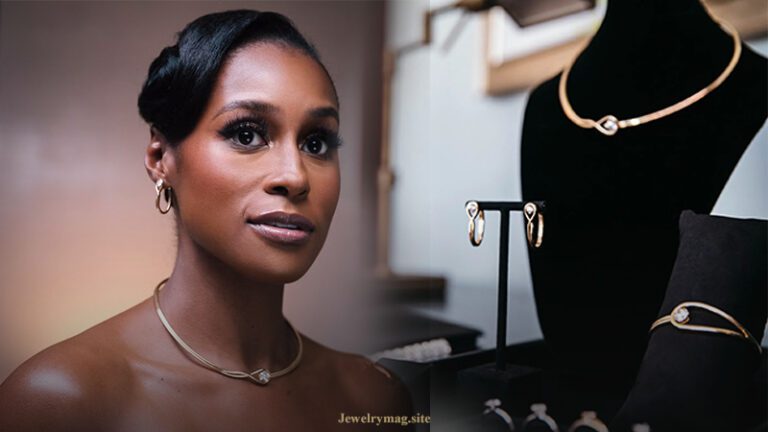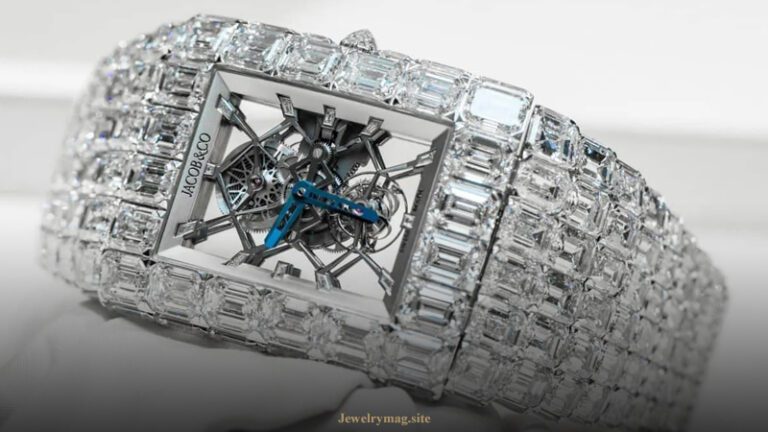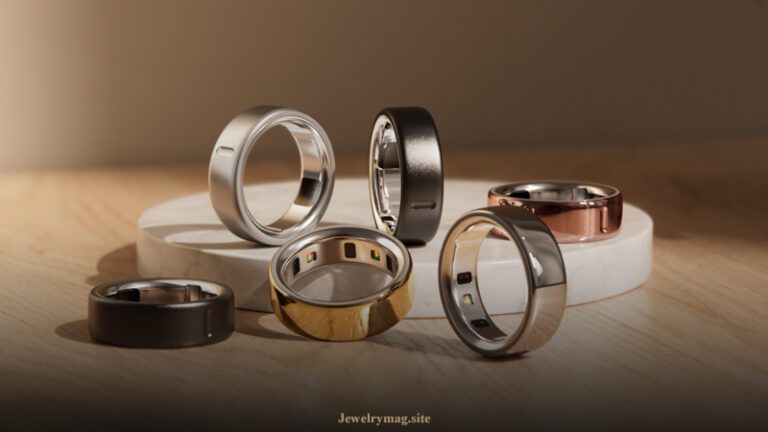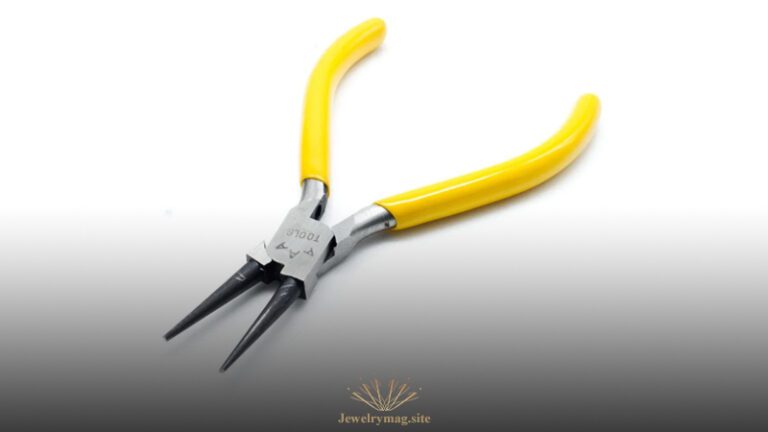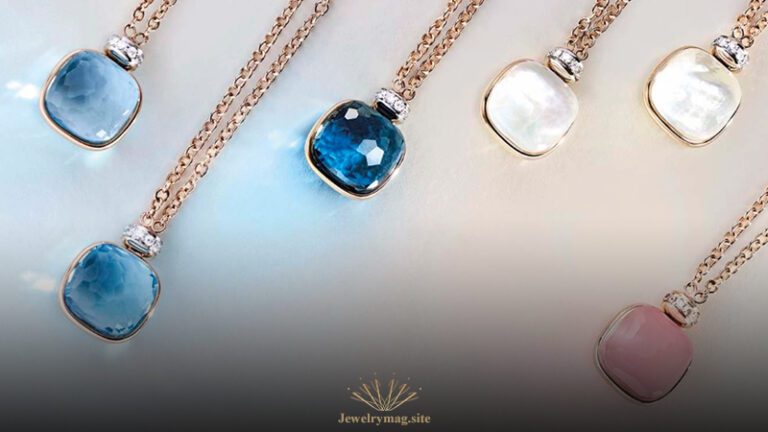The most famous and important jewelry shows in the world attract luxury brands, gem dealers, collectors, and enthusiasts from all over. These events showcase exquisite pieces, latest trends, and innovations in the jewelry industry.
The top jewelry shows & fairs
1. VicenzaOro (Italy)
- Location: Vicenza, Italy
- Significance: Known as a leading show for Italian jewelry design and craftsmanship, VicenzaOro takes place twice a year (January and September). It highlights Italian and global jewelry trends.
- Highlights: Gold, diamonds, gemstones, and emerging trends in jewelry design.
2. JCK Las Vegas (USA)
- Location: Las Vegas, Nevada, USA
- Significance: One of the largest jewelry trade shows in North America, JCK Las Vegas attracts over 30,000 attendees, including retailers, designers, and manufacturers from around the world.
- Highlights: Fine jewelry, gemstones, watches, and cutting-edge trends.
3. Hong Kong Jewellery & Gem Fair (Hong Kong)
- Location: Hong Kong Convention & Exhibition Centre
- Significance: The fair is one of the biggest jewelry exhibitions in Asia, with a strong focus on the gemstone trade, particularly diamonds, pearls, and jade.
- Highlights: Gemstones, fine jewelry, and jewelry-making equipment.
4. Biennale des Antiquaires (France)
- Location: Paris, France
- Significance: Held every two years, this show presents a mix of fine art and high jewelry in a lavish setting. It features top names like Cartier, Van Cleef & Arpels, and Chaumet.
- Highlights: Haute joaillerie, rare gems, and high-end antiques.
5. Couture Show (USA)
- Location: Las Vegas, Nevada, USA
- Significance: This exclusive event caters to luxury jewelry designers and retailers, with a focus on fine jewelry and watches. Couture Las Vegas is known for its curated collections from top global designers.
- Highlights: Designer jewelry, bridal jewelry, and fine watches.
6. India International Jewellery Show (IIJS) (India)
- Location: Mumbai, India
- Significance: IIJS is the largest jewelry trade show in India, showcasing the country’s rich tradition in gold and diamond jewelry. It is a key platform for both local and international buyers.
- Highlights: Gold jewelry, diamonds, and traditional Indian jewelry.
7. Jewellery Arabia (Bahrain)
- Location: Bahrain International Exhibition and Convention Centre
- Significance: The largest and most prestigious jewelry exhibition in the Middle East, Jewellery Arabia presents high-end international jewelry brands alongside regional designers.
- Highlights: Fine jewelry, watches, and Middle Eastern luxury brands.
8. GemGenève (Switzerland)
- Location: Geneva, Switzerland
- Significance: GemGenève is relatively new but has quickly become an important event for gem enthusiasts and high jewelry collectors. It features rare gemstones, antique jewelry, and independent designers.
- Highlights: High jewelry, vintage pieces, rare gemstones, and niche designers.
9. TEFAF Maastricht (Netherlands)
- Location: Maastricht, Netherlands
- Significance: Though primarily an art fair, TEFAF also showcases exquisite antique and contemporary jewelry from top dealers around the world. It is renowned for presenting unique, museum-quality pieces.
- Highlights: Antique jewelry, fine art, and contemporary high jewelry.
10. International Jewellery London (IJL) (UK)
- Location: London, UK
- Significance: IJL is one of the UK’s premier jewelry trade events, attracting a variety of British and international designers, manufacturers, and suppliers.
- Highlights: Fine and fashion jewelry, watches, and trends in retail and design.
11. SIJE (Singapore International Jewelry Expo) (Singapore)
- Location: Marina Bay Sands, Singapore
- Significance: SIJE is the largest jewelry event in Singapore and one of the key shows in Southeast Asia. It focuses on high-end and designer jewelry with a strong emphasis on the Asian market.
- Highlights: Luxury jewelry, diamonds, pearls, and gemstones, with a strong representation of regional designers.
12. Bangkok Gems & Jewelry Fair (Thailand)
- Location: Bangkok, Thailand
- Significance: A major hub for the gemstone and jewelry trade in Asia, this fair is particularly known for showcasing Thai craftsmanship and offering affordable gemstones.
- Highlights: Colored gemstones, diamonds, and traditional Thai jewelry.
13. Dubai International Jewellery Show (UAE)
- Location: Dubai, United Arab Emirates
- Significance: This event has become a key jewelry show in the Middle East, catering to the region’s love for luxury and fine jewelry. It attracts international exhibitors and buyers from across the world.
- Highlights: Diamonds, high jewelry, and luxury watches.
14. Antwerp Diamond Trade Fair (Belgium)
- Location: Antwerp, Belgium
- Significance: Antwerp is one of the most important diamond trading hubs in the world, and this event focuses on the diamond sector. It brings together major diamond dealers and buyers from around the globe.
- Highlights: Diamonds, fine jewelry, and diamond trading.
15. Doha Jewellery and Watches Exhibition (Qatar)
- Location: Doha, Qatar
- Significance: This luxury event features international jewelry brands and Middle Eastern designers, known for showcasing exclusive high-end pieces in a glamorous setting.
- Highlights: High jewelry, luxury watches, and custom designs.
16. Istanbul Jewelry Show (Turkey)
- Location: Istanbul Expo Center, Istanbul, Turkey
- Significance: The Istanbul Jewelry Show is a major event in the global jewelry industry, especially known for bridging the markets of Europe, the Middle East, and Asia. It has been a platform for manufacturers, suppliers, and retailers to meet, showcasing Turkey’s prominence in jewelry production, particularly in gold and gemstone craftsmanship.
- Frequency: The show is held twice a year (March and October), making it a key date on the calendar for professionals in the industry.
- Highlights:
- Gold Jewelry: Turkey is one of the largest producers and exporters of gold jewelry in the world, and the show heavily focuses on this.
- Diamond and Gemstone Jewelry: High-quality gemstone and diamond pieces from international and Turkish brands.
- Machinery and Equipment: Besides finished jewelry, the show also features cutting-edge technology and equipment used in jewelry manufacturing, making it popular with industry professionals.
- Cultural Influence: The show often highlights Turkish craftsmanship, known for its intricate designs, and also provides a platform for regional styles from neighboring countries.
- Audience: It attracts a global audience, with a strong focus on Europe, the Middle East, and Central Asia. Thousands of visitors, including wholesalers, retailers, and designers, come to source products and connect with industry leaders.
- Exhibitors: International exhibitors from countries such as Italy, India, Germany, and Thailand, alongside many local Turkish brands, showcase their latest collections.
These shows, together with the previously mentioned ones, play a critical role in defining global trends and introducing new innovations in the jewelry industry. They attract designers, artisans, gemologists, and buyers from all corners of the world, offering a blend of cultural influences and diverse craftsmanship.
How to participate in jewelry shows?
Participating in a jewelry show, whether as an exhibitor, buyer, or visitor, requires planning and preparation. Here’s a step-by-step guide on how to participate in jewelry shows:
1. Decide Your Role: Exhibitor or Visitor
- Exhibitor: If you are a jewelry designer, manufacturer, or retailer, you can showcase your products at the show. This is a great opportunity to network with buyers, retailers, and other industry professionals.
- Visitor/Buyer: If you are attending to buy jewelry, learn about industry trends, or network, you will attend as a visitor.
2. Choose the Right Show
- Research different jewelry shows to find the one that best matches your market, clientele, and business goals.
- Major shows like Baselworld, VicenzaOro, and the Istanbul Jewelry Show cater to different regions, sectors, and price points. Some may focus on luxury jewelry, others on gems or machinery for jewelry manufacturing.
3. Register Early
- Exhibitor Registration: If you want to participate as an exhibitor, you need to apply early. Most jewelry shows open their registration several months in advance and may have limited spaces.
- Visitor/Buyer Registration: Register online through the event’s official website. Some shows are free for buyers or may charge a fee for attendance. Early registration may offer discounted rates or early access.
4. Prepare Necessary Documentation
- Business Credentials: Many shows require proof that you are in the jewelry trade (as a designer, manufacturer, or retailer). Some might ask for your business registration or tax ID.
- Identification: For trade shows, you’ll need proper ID (such as a business card or passport) and often proof of your role within the industry.
5. Arrange Booth/Stand (For Exhibitors)
- Choose Booth Size: Depending on your budget and needs, select a booth size and location within the exhibition hall.
- Booth Design: Design your booth to highlight your jewelry collection in the best possible way. Good lighting, presentation, and branding are crucial.
- Promotional Materials: Prepare brochures, business cards, catalogs, and banners with your company’s branding and information.
- Pricing and Samples: Have clear pricing information ready and consider bringing samples of your work to showcase.
- Marketing & Publicity: Promote your participation through social media, email campaigns, or press releases to attract visitors to your booth.
6. Plan Your Travel and Accommodation
- Hotels: Book accommodation well in advance, as hotels near major trade shows often fill up quickly. Many shows offer deals with local hotels for exhibitors and visitors.
- Travel: Arrange your flight or travel plans in advance. Some shows provide transportation services between hotels and the venue.
7. Network and Make Appointments in Advance
- Many shows provide attendee lists or exhibitor directories beforehand. Use this to schedule meetings with potential buyers, suppliers, or partners.
- Social Media & Networking: Promote your attendance on social media and through email marketing to connect with other attendees and make appointments.
8. Prepare for Shipping (Exhibitors)
- Shipping Jewelry: If you are exhibiting, make arrangements for shipping your jewelry securely to the venue. Use a trusted logistics provider, as you will likely be shipping high-value items.
- Booth Materials: You may also need to ship marketing materials, booth displays, and other essentials to the venue.
9. Understand Local Regulations
- Customs and Import Duties: If you’re participating in an international show, be aware of customs regulations, taxes, and duties for importing and exporting jewelry.
- Hallmarking: Some countries require jewelry to meet specific hallmarking standards, so ensure that your pieces comply with local regulations.
10. Be Prepared to Sell
- Many shows allow direct sales, so make sure you are prepared for on-the-spot sales or orders. Have clear terms for pricing, payment, and shipping.
- Payment Methods: Ensure you can accept various forms of payment, including credit cards or international transfers, depending on the clientele.
11. Follow Up After the Show
- After the event, follow up with leads, contacts, and potential buyers you met at the show.
- Evaluate the Event: Consider the success of the event in terms of sales, networking, and exposure to decide if you will participate again.
Key Considerations for participating in jewelry shows
- Exhibitor Fees: Booth space can be expensive, so factor this into your budget. Check if the event offers packages with additional services like electricity, Wi-Fi, or extra promotional opportunities.
- Insurance: Make sure your jewelry is insured, especially during transport and while on display at the show.
- Language Barriers: If attending international shows, you may need to communicate in different languages. Consider bringing multilingual staff or translators if necessary.



